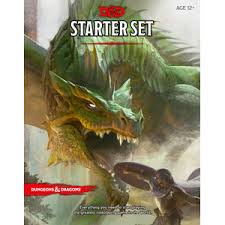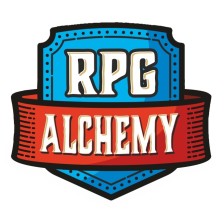This past week the gaming group I GM for wrapped up Lost Mines of Phandelver, the adventure scenario that comes with the new Dungeons & Dragons Starter Set. We thought we’d give this adventure a run-through before beginning our new 5E campaign. I’m not normally a fan of the published adventure but Lost Mines is pretty solid, especially for an introductory adventure. I’m glad we took the time; not only did we have fun with the pre-gens but we also learned some important lessons in the context of a new rule set. Here are the a few of the more important things we learned about 5E:
Don’t Underestimate Low DC Saving Throws: There are a multitude of low-CR creatures in the adventure (and the Monster Manual) which have attacks that force the character to make a saving throw. For several of these creatures the save is in addition to whatever attacked and did damage already. When I first saw the DC’s for these saves my initial thought was that they seemed awfully low until I realized that the PC’s were forced to make the save every time the creature hit. Sooner or later the inevitable will happen, such as when both of the party’s warriors finally failed a save vs. a ghoul’s paralyzing touch in the same round! That encounter, which had been fairly easy up to that point, almost became the final encounter of the adventure.
 You’ll Get Hit, a Lot: Our party had AC’s ranging from 14 to 19 which are pretty good considering 1st to 4th level play. However it seems that in this edition a character’s “toughness” is reflected more in their number of Hit Points than in the difficulty to hit them. This is especially true for monsters. If you take a look at the new Monster Manual you’ll notice generally lower Armor Classes in this edition than in previous ones. I liked the fact that even low-level characters have a chance to hit a high level enemy, of course they might not survive a return��hit but that’s a different issue!
You’ll Get Hit, a Lot: Our party had AC’s ranging from 14 to 19 which are pretty good considering 1st to 4th level play. However it seems that in this edition a character’s “toughness” is reflected more in their number of Hit Points than in the difficulty to hit them. This is especially true for monsters. If you take a look at the new Monster Manual you’ll notice generally lower Armor Classes in this edition than in previous ones. I liked the fact that even low-level characters have a chance to hit a high level enemy, of course they might not survive a return��hit but that’s a different issue!
Play is Much Faster: Even with players��discovering the details of��a new system and learning how their characters’ abilities work the game plays fast. Oftentimes “the grind” of previous editions made encounters drag way past their prime. Each player’s turn is noticeably quicker in 5th edition due to a variety of factors. The economy of actions is much simpler, math is kept to a minimum, and probably the biggest contributor, the Advantage/Disadvantage mechanic. The virtual elimination of having to calculate modifiers every time someone attacks really speeds up the game, if your fighter has a +5 to hit with his longsword (Strength bonus and Proficiency bonus) then every time he takes an attack he’ll add +5 to the die roll. Standard attack +5, multi-attack +5, opportunity attack +5, attack a creature with an ally +5, attack from prone +5, you get the idea. Until fifth edition I didn’t really have any idea how much time we were wasting calculating modifiers��on every single attack.
Quick Rules��Calls Are Easy: I’ve never really had much problem making a quick judgment call during play but this edition makes it even simpler. In essence you only need to ask yourself one thing: “What ability should be used?” Regardless of what a character may be attempting all you need to do is pick a stat and let the player roll. The only caveat is whether or not the player can make the argument that proficiency should be included in the attempt. I’ve already discovered that I like some of the interesting things that players come up with for justifications for applying their proficiency bonus besides their skills.
The TPK is Alive and Well: We had a great time playing Phandelver but ultimately the adventure ended in the total defeat of the heroes. In the final encounter against the primary antagonist the party split up to get the drop on the villain. A couple of failed saves,��some questionable tactical decisions, and an ill-timed DM hot-streak with the dice resulted in two dead heroes, an unconscious hero trapped beneath a pile of rubble, and the final hero unconscious and completely entangled in��webs. Unfortunately for the unconscious heroes the bugbear patrol they ignored earlier was approaching to investigate the noise. At least they stopped the villain, even if there’s no one left to tell the tale!
All in all we had a great time with the adventure. It was a solid introduction to the new rules and a pretty good adventure in and of itself. For me it was also the first time I’ve ever ran an adventure set in the Forgotten Realms. I’m very familiar with the setting I just haven’t ever used it before so this was a nice change of pace. The players had a lot of fun and using pre-gens was a good way for them to develop and experiment with new strategies and tactics.

I think my favorite thing about the new edition is that it plays so much quicker. I feel like you can get a lot more play time in due to the fact that you’re not adding up modifiers and looking up rules constantly. Also, at this early stage in the game I don’t see you getting into the problems I experienced in 4E where you’d have an ultimate stalemate of two highly armored enemies (PC & NPC) fighting it out and not being able to hit each other.
Samuel Van Der Wall recently posted…How To Be A Better Player ���� Advanced Tips
The problem you mentioned with the stalemate is a lot less likely in this edition. In general AC’s are fairly low so players rearely feel the frustration of being ineffective. A creature may have a lot of HP but you should almost always be able to at least hit them.
John Lewis recently posted…D&D 5E: Things You Might Of Missed
I know this is from 2014 but… for any future DMs
If you dove-tail the end of this adventure to Out of the Abyss, instead of TPK (or even if they finish the main dungeon), you can have them awake feeling like a ton of bricks fell on them… and they try to put their hand on their aching head only to find… they are chained and in a Drow prison somewhere deep in the Underdark… with a sadistic overseer… and ALL YOUR EQUIPMENT IS GONE… /Insert Evil DM Laugh/
However, I would caution new DMs that OotA isn’t for the weak of heart — it’s closer to a campaign setting with a story arc. Requires a lot of DM prep to avoid becoming “Oh no! There are more bandits on the road”, but I’ve had a good time running it (we’re almost to the half-way mark!)